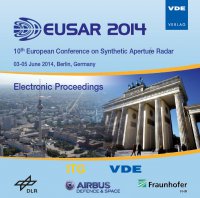Multi-channel bistatic SAR experiments with TerraSAR-X
Conference: EUSAR 2014 - 10th European Conference on Synthetic Aperture Radar
06/03/2014 - 06/05/2014 at Berlin, Germany
Proceedings: EUSAR 2014
Pages: 4Language: englishTyp: PDF
Personal VDE Members are entitled to a 10% discount on this title
Authors:
Shao, Yunfeng; Wang, Robert; Deng, Yunkai (Department of Space Microwave Remote Sensing System, Institute of Electronic, Chinese Academy of Sciences, China)
Loffeld, Otmar (Center for Sensor Systems, University of Siegen, Germany)
Abstract:
This paper presents experiment results of Bistatic SAR technology (BiSAR) in department of Space Microwave Remote Sensing System, Institute of Electronic, Chinese Academy of Sciences. The research results include synchronization, BiSAR imaging, single-baseline bistatic InSAR (Sb-BiinSAR), multi-baseline bistatic InSAR (Mb-BiinSAR) and bistatic SAR Digital Bean-Forming (BiSAR-DBF). The BiSAR has several advantages. First, the bistatic SAR technology obtains two or more SAR images simultaneously, which reduces the temporal decorrelation and atmospheric effect. Second, the design of the baseline is flexible, which is important in the multibaseline InSAR technology (Mb-InSAR). Third, the measurement of the baselines ofBiinSAR is more precious than that of mono-static InSAR. Forth, the acquisition start times and the squint angles of all the SAR images in bistatic spotlight InSAR mode are same, which reduces the additional process for Doppler frequency spectra layover. Fifth, BiSAR is flexible to apply DBF.


